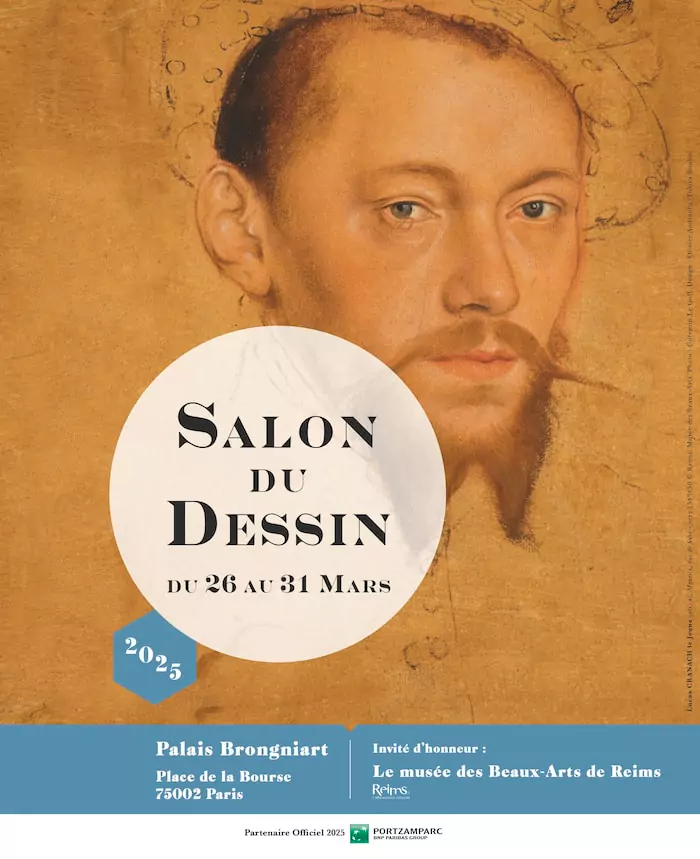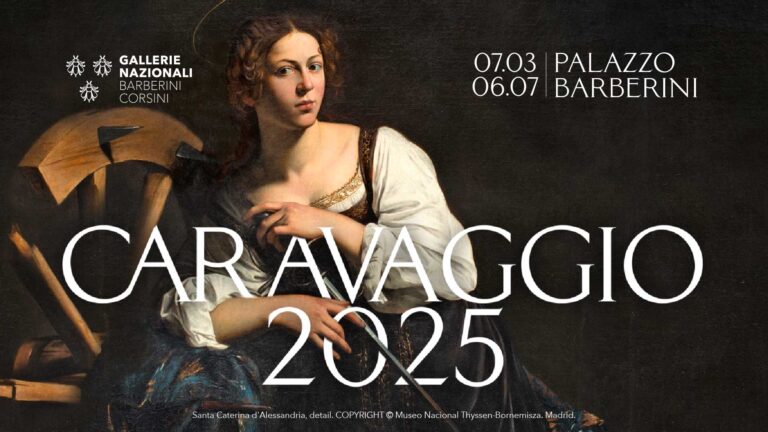Looking for a muse? Check no further. Discover the Best of Art, Culture, History & Beyond!
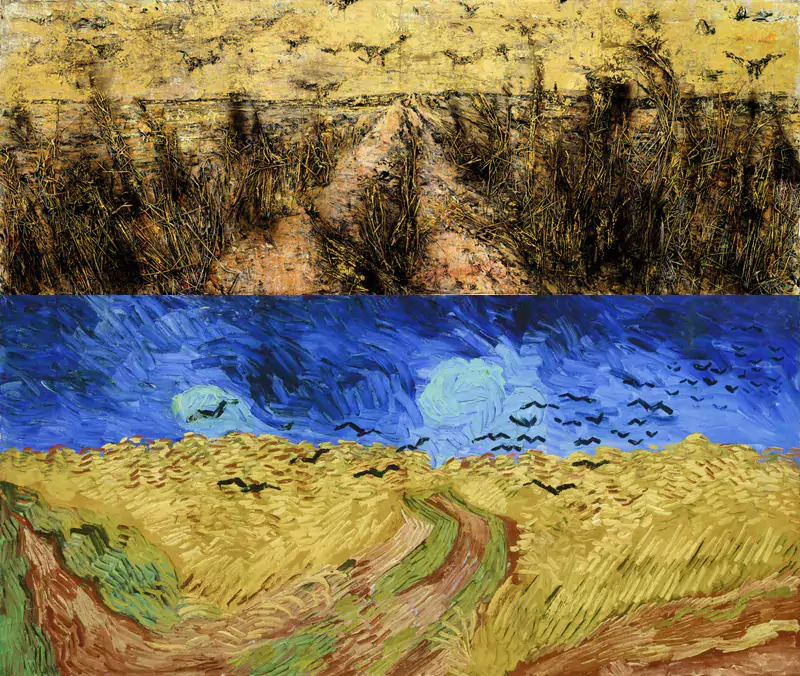
The Van Gogh Museum in Amsterdam has once again brought a thought-provoking and visually striking exhibition to its galleries. “Anselm Kiefer: Where Have All the Flowers Gone” presents a powerful conversation between two artists separated by time yet united by their profound engagement with nature, history, and human emotion. Running until June 9, 2025, before traveling to London’s Royal Academy of Arts, this exhibition explores the deep connections between the legendary post-impressionist Vincent van Gogh and the contemporary German master Anselm Kiefer.
Kiefer’s Early Fascination with Van Gogh
Anselm Kiefer, born in 1945, has long acknowledged the inspiration he has drawn from Van Gogh’s work. His journey with Van Gogh began in 1963, when, as an 18-year-old, he hitchhiked through the Netherlands, Belgium, and France, tracing the places where the Dutch artist lived and worked. This formative experience left a lasting impression on Kiefer, shaping his approach to art and deepening his fascination with Van Gogh’s powerful visual language.
Unlike many admirers who are drawn to Van Gogh’s tragic personal story, Kiefer focused on the structural and compositional brilliance of the artist’s work. He was captivated by the raw energy of Van Gogh’s brushstrokes, the dynamic movement within his landscapes, and his almost architectural approach to color and texture. These elements would later become foundational in Kiefer’s own artistic practice, particularly in his large-scale, heavily layered canvases.
The Exhibition’s Structure: A Dialogue Between Two Masters
The exhibition at the Van Gogh Museum presents a compelling narrative, weaving together Kiefer’s monumental paintings and installations with selected works from Van Gogh’s collection. The display is divided into thematic sections that explore shared motifs such as sunflowers, wheatfields, and the night sky. Each section highlights how Kiefer reinterprets Van Gogh’s themes through his unique material-heavy and historically conscious approach.
One of the key pieces in the exhibition, “The Starry Night” (2019), is Kiefer’s homage to Van Gogh’s famous masterpiece housed at the Museum of Modern Art in New York. Measuring nearly eight meters in width, Kiefer’s version transforms Van Gogh’s swirling, celestial vision into a textured, sculptural painting made of straw, gold leaf, and thick layers of pigment. The effect is mesmerizing: where Van Gogh painted movement, Kiefer builds it physically, making the sky almost tangible.
Another striking work is “O Stalks of the Night” (2019-2021), a piece inspired by both Van Gogh’s wheatfields and the poetry of Paul Celan. Using straw, clay, steel, and plaster, Kiefer constructs a tactile landscape that resonates with Van Gogh’s “Wheatfield with Crows.” However, where Van Gogh’s work evokes emotional turbulence and existential questioning, Kiefer’s version appears even more fragmented and chaotic, reflecting the weight of history and memory that he often embeds in his work.
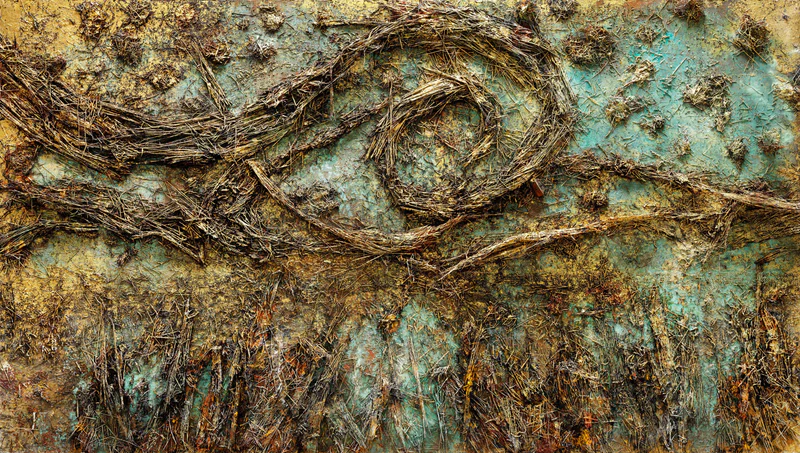
Sunflowers: A Shared Symbol of Life and Decay
Sunflowers are among the most iconic symbols associated with Van Gogh, yet Kiefer reinterprets them with a darker undertone. His “Sol Invictus” (1995), a towering work originally featuring real sunflower seeds, carries a sense of inevitable decay. The piece, which had to be modified for this exhibition due to conservation concerns, replaces natural seeds with artificial ones to prevent insect damage.
Kiefer’s use of sunflowers extends beyond a simple visual reference to Van Gogh. He sees them as a metaphor for cycles of life and death, a theme deeply ingrained in his work. While Van Gogh’s sunflowers celebrated beauty, transience, and artistic passion, Kiefer’s version feels heavier, shadowed by history and loss.
Another recent sunflower piece, simply titled “Sunflowers” (2023), is displayed at the Vincent van Gogh Huis in Zundert, Van Gogh’s birthplace, as part of a complementary exhibition. Here, Kiefer’s sunflowers appear weathered and scorched, symbolizing the passage of time and the weight of human suffering.
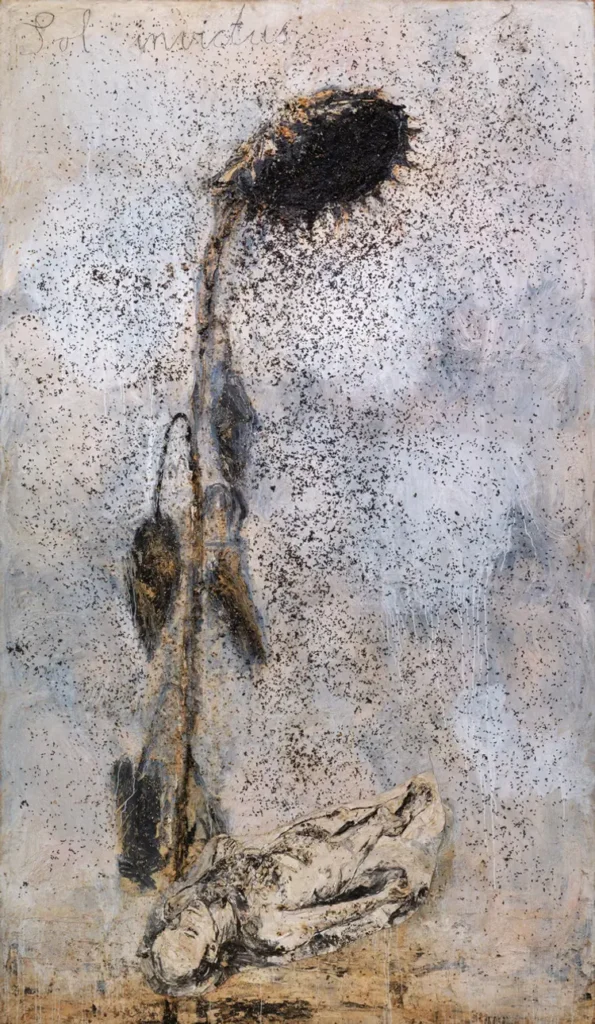
History, War, and the Burden of Memory
While Van Gogh’s work is deeply personal and introspective, Kiefer’s art expands outward, engaging with broad historical and political themes. His choice of exhibition title, “Where Have All the Flowers Gone,” references the famous anti-war song by Pete Seeger, reinforcing the idea that nature is not just a subject of beauty but also a witness to human conflict and destruction.
Kiefer’s interest in war, memory, and destruction is evident throughout the exhibition. In “The Crows” (2019), he draws upon Van Gogh’s “Wheatfield with Crows,” a work often (though incorrectly) associated with the artist’s impending suicide. Kiefer’s interpretation is layered with additional meaning, as crows frequently appear in his oeuvre as symbols of war, death, and the fragility of civilization.
Another example is “Untitled” (1963), an early sketch made during Kiefer’s pilgrimage in Van Gogh’s footsteps. This rarely seen work provides insight into Kiefer’s youthful fascination with the Dutch artist and foreshadows the thematic connections that would emerge later in his career.
Materiality and Texture: The Kiefer Touch
One of the most striking aspects of Kiefer’s work is his use of unconventional materials. Unlike Van Gogh, who relied solely on paint to create texture and movement, Kiefer incorporates elements like lead, ash, straw, and thick impasto to build his compositions. The result is a tactile, almost sculptural quality that invites viewers to experience the works beyond mere visual observation.
In “The Starry Night” (2019), the swirling heavens are not just painted but physically built up, creating a surface that captures and reflects light in unpredictable ways. This technique reinforces Kiefer’s belief that history and memory are layered, fragmented, and often obscured by time.
The Amsterdam Experience: A Must-See Exhibition
For visitors to the Van Gogh Museum, “Anselm Kiefer: Where Have All the Flowers Gone” offers a rare opportunity to see the dialogue between two visionary artists unfold in real-time. The curators, led by Edwin Becker and museum director Emilie Gordenker, have carefully crafted an exhibition that balances reverence for Van Gogh with a deep engagement in Kiefer’s complex, often challenging interpretations.
What makes this exhibition truly compelling is how it bridges different artistic generations and perspectives. Van Gogh’s work, filled with personal turmoil and artistic passion, finds a counterpoint in Kiefer’s grand historical narratives and material explorations. Together, they create a conversation that transcends time, inviting viewers to reflect on themes of beauty, suffering, and the enduring power of art.
“Where Have All the Flowers Gone” challenges visitors to see Van Gogh through a new lens, one that embraces the weight of history and the tactile intensity of contemporary art. Kiefer’s monumental works stand as testaments to the ongoing relevance of Van Gogh’s vision, proving that great art is never static; it evolves, resonates, and finds new meaning in the hands of future generations.
For those who appreciate deep artistic engagement, powerful visual storytelling, and the intersection of past and present, this exhibition is a must-see. Whether you are a devoted Van Gogh enthusiast or a newcomer to Kiefer’s world, the dialogue between these two artists will leave a lasting impression.
View event info here Exhibition : Anselm Kiefer – ‘Where Have All the Flowers Gone‘

This article is published on ArtAddict Galleria, where we explore the intersections of art, history, and culture. Stay tuned for more insights and discoveries!


